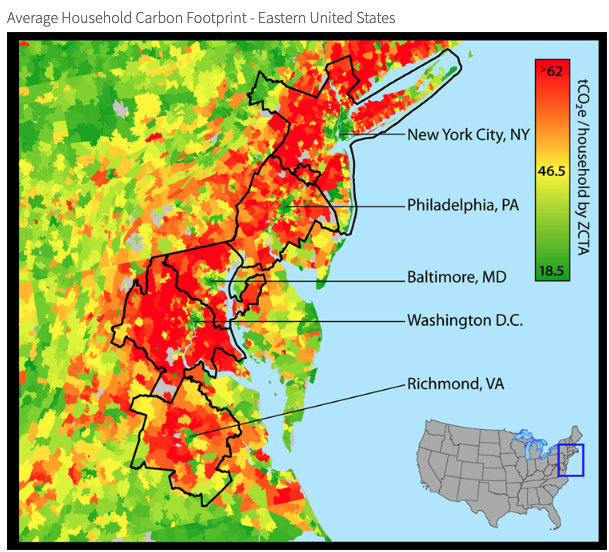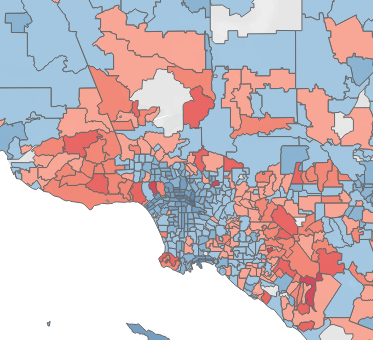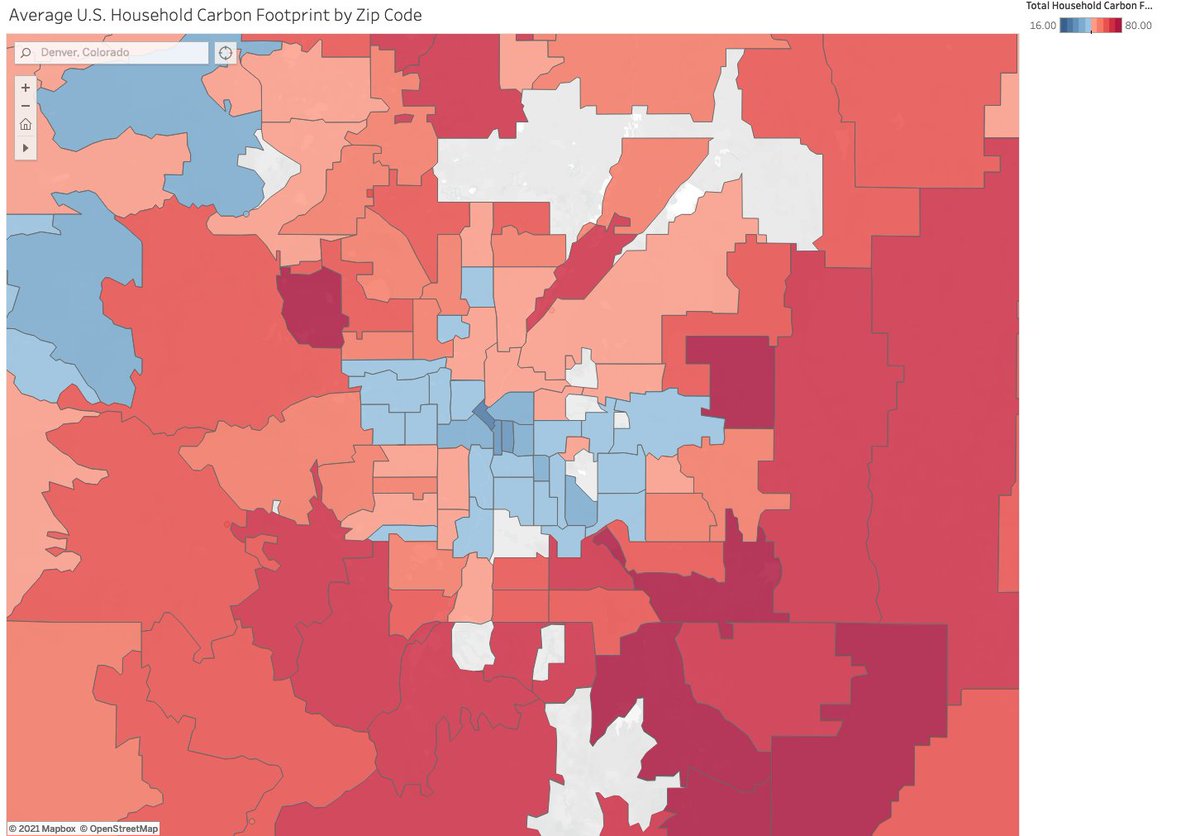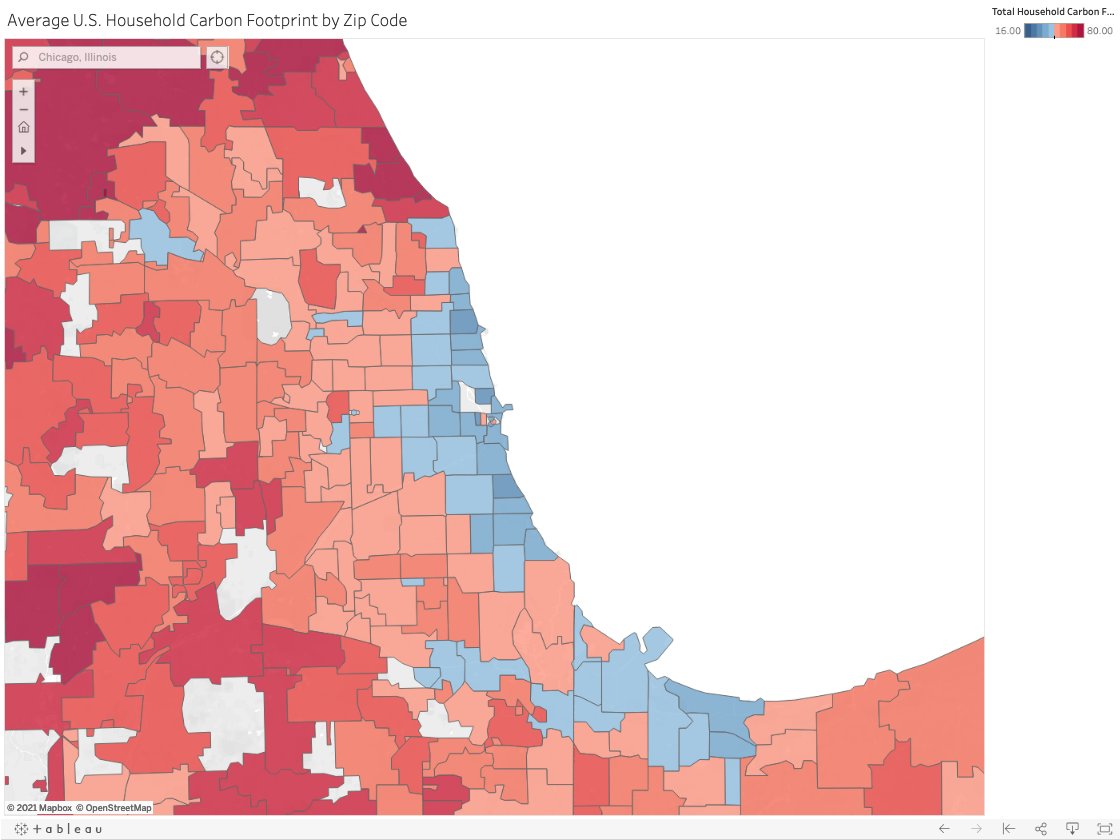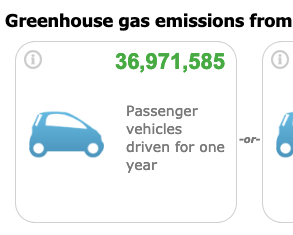Let& #39;s take this a step further and make it a forward-looking thought experiment to consider the question:
How much carbon pollution could the US save by 2030 with urban infill housing? /1
https://coolclimate.org/maps ">https://coolclimate.org/maps"... https://twitter.com/zack_subin/status/1381046062115221512">https://twitter.com/zack_subi...
How much carbon pollution could the US save by 2030 with urban infill housing? /1
https://coolclimate.org/maps ">https://coolclimate.org/maps"... https://twitter.com/zack_subin/status/1381046062115221512">https://twitter.com/zack_subi...
Everywhere around the country you see the same pattern: low pollution in cities surrounded by dirtier suburbs.
Eyeballing, urban cores are 10-30 tons CO2e/household/yr lower emitting (consumption-based accounting).
Here are LA, Denver, Chicago, & Atlanta. /2
Eyeballing, urban cores are 10-30 tons CO2e/household/yr lower emitting (consumption-based accounting).
Here are LA, Denver, Chicago, & Atlanta. /2
US should build at least 17M homes by 2030.
7.3M to fill the shortage (via @Up4Growth)
+ 10M to keep up with pop growth (7% in 10 yr from @uscensusbureau).
Now let& #39;s say conservatively, planning reform can allow 10 tons annual household savings: low end from above.
/3
7.3M to fill the shortage (via @Up4Growth)
+ 10M to keep up with pop growth (7% in 10 yr from @uscensusbureau).
Now let& #39;s say conservatively, planning reform can allow 10 tons annual household savings: low end from above.
/3
Thus, rough calculation: building these 17M homes in urban cores & other low emitting neighborhoods rather than suburbs could save ~170M tons CO2e/yr.
That& #39;s about the direct savings from swapping 37M gasoline cars with EVs powered by 100% renewables. https://www.epa.gov/energy/greenhouse-gas-equivalencies-calculator">https://www.epa.gov/energy/gr... /4
That& #39;s about the direct savings from swapping 37M gasoline cars with EVs powered by 100% renewables. https://www.epa.gov/energy/greenhouse-gas-equivalencies-calculator">https://www.epa.gov/energy/gr... /4
Of course, the @CoolClimateNw team has already done this calc for CA using more sophisticated and conservative assumptions.
Their central estimate in http://dx.doi.org/10.17645/up.v3i2.1218">https://dx.doi.org/10.17645/... is 7M tons/yr by 2030. Maximum in scenario tool yields 15M. https://coolclimate.berkeley.edu/ca-scenarios/index.html
/5">https://coolclimate.berkeley.edu/ca-scenar...
Their central estimate in http://dx.doi.org/10.17645/up.v3i2.1218">https://dx.doi.org/10.17645/... is 7M tons/yr by 2030. Maximum in scenario tool yields 15M. https://coolclimate.berkeley.edu/ca-scenarios/index.html
/5">https://coolclimate.berkeley.edu/ca-scenar...
Upscaling that 15M to US based on population is 125M tons, a bit lower than the 170M.
That could be an underestimate cause CA is already low-emitting, or overestimate cause CA has, uhm, worse housing policy than most (almost half US shortage according to @Up4Growth). /6
That could be an underestimate cause CA is already low-emitting, or overestimate cause CA has, uhm, worse housing policy than most (almost half US shortage according to @Up4Growth). /6
This deserves a research study rather than a Twitter thread! The question is, why has no one done this calculation yet?
I discussed some possible reasons in this @RMI_UT blog post.
https://rmi.org/building-urbanism-into-climate-policy/
Climate">https://rmi.org/building-... advocates MUST start taking the urban infill solution seriously. /7
I discussed some possible reasons in this @RMI_UT blog post.
https://rmi.org/building-urbanism-into-climate-policy/
Climate">https://rmi.org/building-... advocates MUST start taking the urban infill solution seriously. /7
Glad the @WhiteHouse infrastructure plan continues to prioritize this, covered by @JerusalemDemsas https://www.vox.com/22369761/biden-infrastructure-american-jobs-act-housing-prices-rents-bubble-race-to-the-top.">https://www.vox.com/22369761/... /8
We may need much more than a  https://abs.twimg.com/emoji/v2/... draggable="false" alt="🥕" title="Karotte" aria-label="Emoji: Karotte">-only program though to get the full benefits above. What we need are a national pro-housing movement and climate action movement collaborating across communities and at all levels of government. #YIMBY #ActOnClimate /fin
https://abs.twimg.com/emoji/v2/... draggable="false" alt="🥕" title="Karotte" aria-label="Emoji: Karotte">-only program though to get the full benefits above. What we need are a national pro-housing movement and climate action movement collaborating across communities and at all levels of government. #YIMBY #ActOnClimate /fin

 Read on Twitter
Read on Twitter